
Become a supporter
The Elbe Cycle Route - Elberadweg - is one of Europe's most famous river rides - and it really deserves that title. It's easy to follow, mostly flat and full of interesting places to see. But what stood out most to us between Dresden and Magdeburg was how often the atmosphere changed. One moment we were riding past elegant buildings, the next through open fields, forests or quiet villages. The river is always nearby, but it doesn't try to steal the show - it just gently leads the way. This part of the route felt like a perfect example of how well Germany does cycling: it's varied, welcoming and thoughtfully planned. Whether you've done long tours before or this is your first time, following a river like the Elbe is a great way to enjoy the journey - especially one that never feels the same for long.
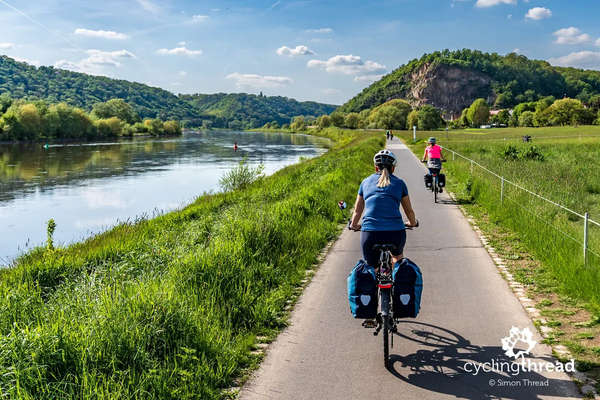
Dresden is a beautiful place to start a cycling trip. The route runs right through the city, along the river and then out into greener spaces. Sometimes you're close to the water, sometimes a bit further away, but the river is always there. It's hard to ride fast around Dresden - there's too much to see. Not far from the city you'll find Radebeul, where fans of adventure stories can visit the Karl May Museum. Just a short ride away is Altkötzschenbroda, a peaceful, creative old village. And nearby, Wackerbarth Palace welcomes visitors with vineyards and a working winery. Dresden isn't just a starting point - it's a place worth staying an extra day to explore.
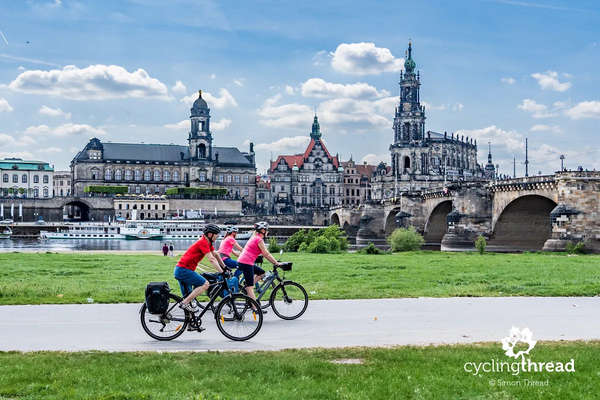
Between Dresden and Magdeburg, the route is full of variety. You'll ride on smooth asphalt most of the time, but there are also short stretches of cobblestones, gravel or older concrete. Sometimes you cycle along raised dikes, sometimes through quiet woods or over open farmland. Village centers might slow you down with bumpy stones and riverside paths can change surface without warning. But that's part of the fun - it keeps the ride interesting. It's not about going fast. It's about taking in the changes, enjoying the rhythm and being surprised. A bike with slightly wider tires helps, but you don't need anything special to enjoy it.
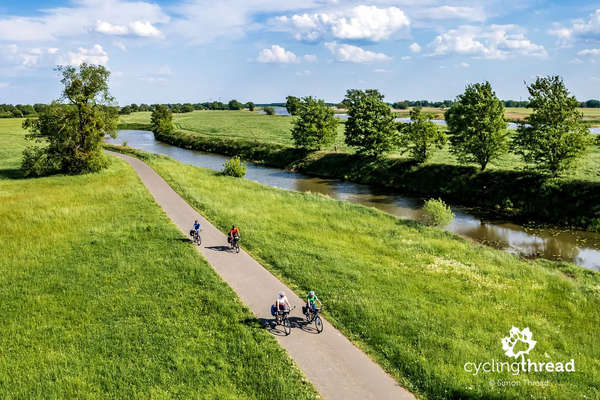
Wittenberg sits about halfway between Dresden and Magdeburg, and it feels like a natural place to stop. It's where Martin Luther began the Reformation by posting his 95 Theses on the church door. Even if you're not into history, the town has a special atmosphere. The route brings you straight to the old town, which is small, walkable and full of charm. We spent the night at the Cranach-Herberge and explored the cobbled streets in the evening, after most visitors had gone. It was peaceful, quiet - and powerful in a quiet way. Wittenberg isn't just pretty - it means something.
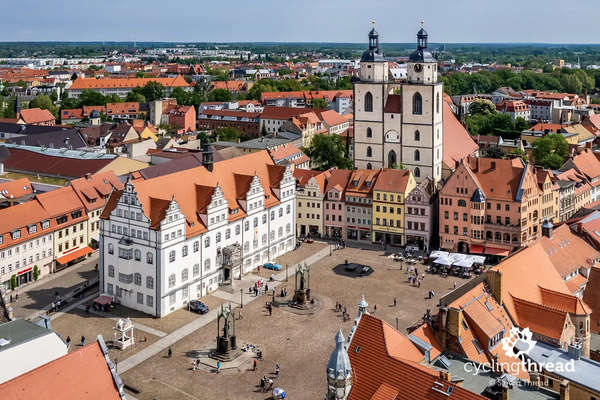
One nice thing about this route is how often it crosses from one side of the Elbe to the other. Sometimes you take a big bridge, sometimes a small local ferry. These crossings give the ride a pleasant break and a chance to enjoy the view. On our ride, we changed sides often - sometimes by choice, sometimes because the route suggested it. The ferries were a highlight. They're simple, quiet and local - and they let you slow down for a moment and chat with other cyclists. Each crossing adds something small, but special, to the journey.
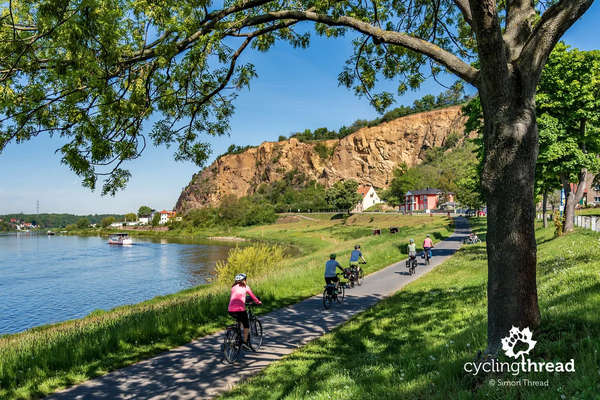
Arriving in Magdeburg feels like reaching a quiet but spacious end to the trip. The route takes you into the city through green parks and along the riverside, so you don't feel the usual rush of traffic. Magdeburg doesn't have the grand look of Dresden, but it has its own kind of character - modern, open and honest. It's a big enough place to find anything you need as a cyclist and still close to the water. After a few days of varied riding, Magdeburg gives you space to reflect - and a satisfying contrast to where the journey began.
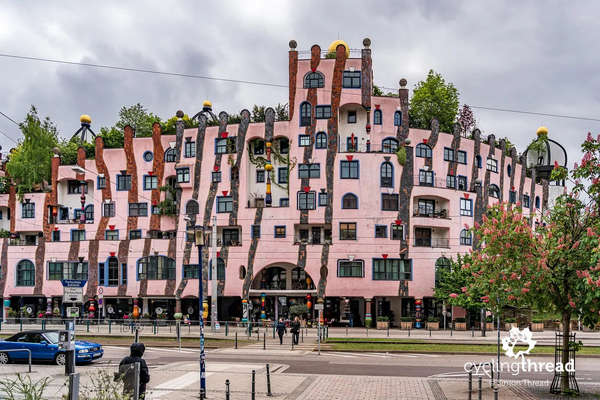
One of the best things about this route is how well it's connected by train. Towns like Dresden, Riesa, Wittenberg, Dessau and Magdeburg all have train stations and many trains take bikes. That means you don't have to cycle the whole route if you don't want to. You can skip a section, go back by train, or take a shortcut if the weather turns bad. It makes the route more flexible - and more relaxing. If you like to travel by train with bicycle, this is one of the easiest parts of Germany to do just that. Even if you don't end up using the trains, it's nice to know they're there if you need them.
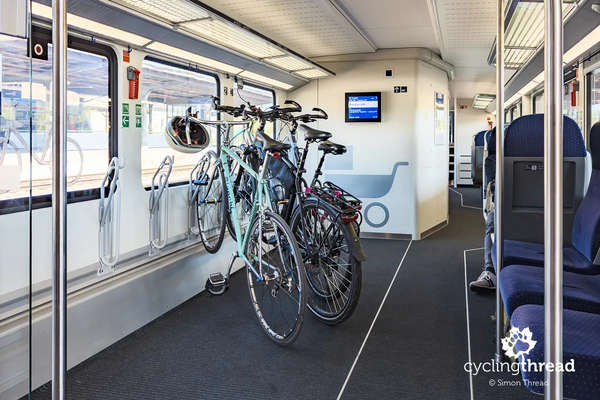
Germany's Bett+Bike program is a great example of how to take care of bike travelers. On this section of the Elbe Route, we stayed at two certified Bett+Bike hotels. In Wittenberg, the Cranach-Herberge had a secure bike room and a cozy feel, right next to the old town square. In Magdeburg, Sleep&Go offered a spacious basement for bikes, with racks on the walls and chargers for e-bikes. These places weren't just bike-friendly - they really understood what cyclists need after a long day on the road. And that made a difference.
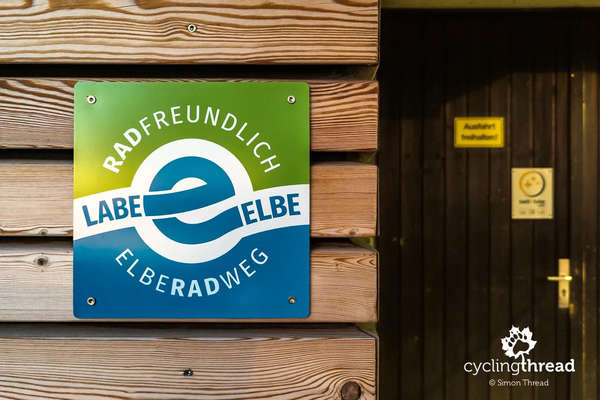
Looking back at our ride from Dresden to Magdeburg, we didn't just remember the towns and the distances - we remembered the feeling. The Elbe Cycle Route doesn't try to impress with big gestures. Instead, it lets you notice small things: a quiet road through the floodplain, the way the light changes over the fields, or the wind in the trees. Those moments stay with you. And even days later, we weren't thinking about the kilometers - we were thinking about the calm, steady rhythm of the river. It's that kind of ride.
Check out our entire report from the Elbe route on our blog at www.cyclingthread.com
Don't miss my other posts on cycle.travel:
- Ciclovia Alpe-Adria - Austria & Italy
- Loire by bike in France
- Rhine Cycle Route in Switzerland
- Tauber-Altmühl Radweg in Franconia
The Tauber and Altmühl River Cycling Route in Franconia, also known as the Tauber-Altmühl Radweg, is regarded as one of the most captivating cycling routes in Germany. Its glowing reputation stems from the stunning landscapes of two river valleys, including the rocky terrain of the Franconian Jura, which gives the Altmühl River a distinctive charm. Adding to the "romantic" atmosphere of the Tauber-Altmühl route are Franconia's medieval towns, among them the famous Rothenburg ob der Tauber, which consistently ranks first in the poll of Germany's Top 100 Attractions. It was in this delightful setting that we spent a long June weekend.

Rothenburg is the perfect starting point for a cycling trip through Franconia. The city is stunning - whether viewed from a drone’s perspective or while strolling through its charming streets. It shines during the day, but its nighttime ambiance is equally captivating. The first impression is also remarkable: arriving from the train station, you reach the well-preserved ring of high defensive walls and enter the city’s golden age through a majestic gate. We recommend organizing your visit to Rothenburg as we did—spend the first night in Nuremberg, take a morning train to Rothenburg, and dedicate the rest of the day to exploring the city on foot. There are a dozen or so key landmarks and places worth seeing, and when combined with the medieval atmosphere of Rothenburg, it truly deserves at least a full day of your time. For the best experience, consider hiring a local guide to bring the city’s rich history to life.

The cycling route along the Tauber and Altmühl rivers follows an unusual pattern. It first runs upstream along the Tauber River and then leads downstream along the Altmühl. The route begins in Wertheim, near the confluence of the Tauber and Main Rivers. From there, it heads toward the magnificent Rothenburg, the highlight and the highest point on the route. After leaving this Franconian gem and crossing the nearby European Watershed, the Altmühl River takes over, guiding cyclists all the way to its confluence with the Danube in the town of Kelheim. Regardless of where you start the journey, the route begins with an uphill ride along one river, followed by a gentle, enjoyable descent along the other after visiting Rothenburg. The two sections differ in proportion—the part along the Tauber River is about 100 kilometers, while the section along the Altmühl spans roughly 250 kilometers.
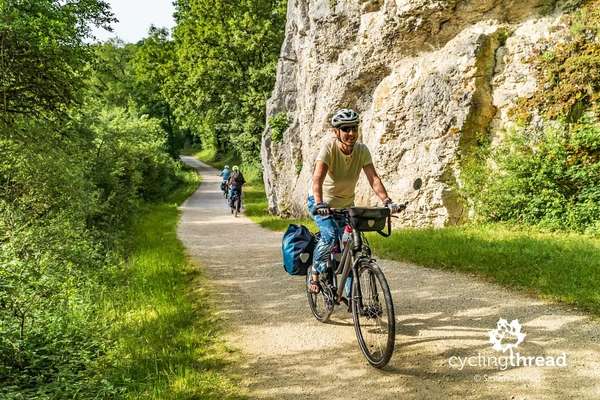
It’s hard not to notice that most cycling paths in the Altmühl Valley Nature Park are not paved roads but gravel paths made of fine, delicate aggregate. This is somewhat contrary to what we see on the best cycling routes in Europe. However, it’s undeniable that the gravel sections blend beautifully with the rocky landscape of the valley. As we learned, this isn’t the final state but rather a result of limited budgets in local municipalities, which cannot afford a large-scale investment in cycling surfaces. Gravel, however, comes with its drawbacks - greater rolling resistance for bike tires, dust in the air, and higher annual maintenance costs to ensure true cycling comfort.
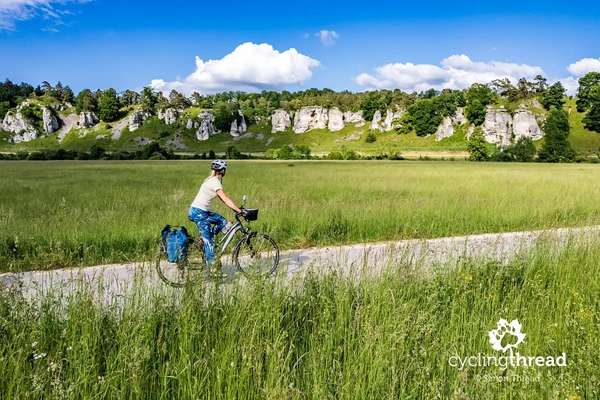
Among the geological attractions of the Altmühl Valley is the Burgstein rock, a massive limestone tower whose fascinating story is told through its numbers. The limestone it is composed of was formed approximately 135 to 154 million years ago, at a time when southern Germany was located at the latitude of today’s Florida, and the Atlantic Ocean was just beginning to form. Even more intriguingly, about 5 million years ago, this rock was shaped by the waters of the Danube, which only changed its course to the modern one during the Ice Age - around 150,000 years ago - leaving its former valley to today’s Altmühl River. Burgstein is now one of Bavaria’s most important geological sites and, of course, a picturesque backdrop for a souvenir photo.

The well-preserved medieval stone bridges are among the yet another places to see along the route. You’ll find them in places like Herrieden and Ornbau, one of Bavaria’s smallest towns. Though Ornbau is much smaller than Herrieden, its 17th-century bridge over the Altmühl River is longer and leaves a far greater impression. Built from thick sandstone blocks, its central span is adorned with an 18th-century statue of Saint John of Nepomuk. It is even referred to as a gem of the Upper Altmühl Valley. The bridge leads to a town with a preserved medieval urban layout, encircled by a ring of 13th-century city walls. Another of the beautiful medieval bridges that have survived over the Altmühl River can be found later in the route near Eichstätt, close to the village of Pfünz. This 15th-century structure, blown up by Austrians in 1800, was rebuilt in 1822 and remains one of Bavaria’s most valuable stone bridges.
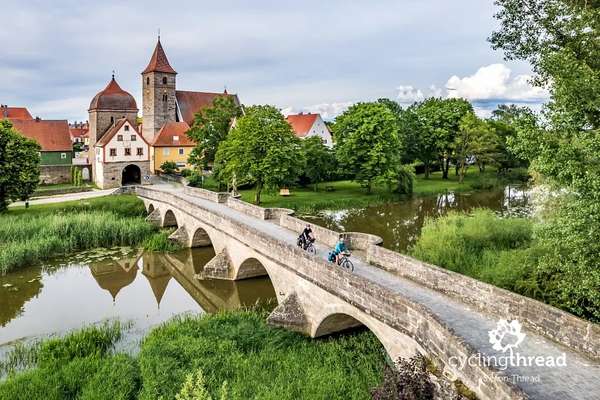
An interesting detail - and a minor attraction in itself - was the way we traveled to Franconia. Given the considerable distance (1,100 kilometers) from Gdańsk to Franconia, as well as our shared desire to rest along the way, we chose to travel with bicycle by train. We first boarded the well-known Berlin-Gdynia Express from Gdańsk to Berlin, and from there, switched to Germany’s high-speed train, the ICE, heading to Nuremberg. Booking a ticket for the "German Pendolino" early guarantees both a reasonable price and a very comfortable journey. This generation of ICE trains offers up to eight bike spaces in a dedicated compartment located in the first car - some with horizontal hooks and others (on the ends) with vertical ones to leave more room for passengers passing through the bike area. It's a completely different experience compared to what our own Pendolino offers. The next day, we reached Rothenburg with a short local connection through Ansbach.
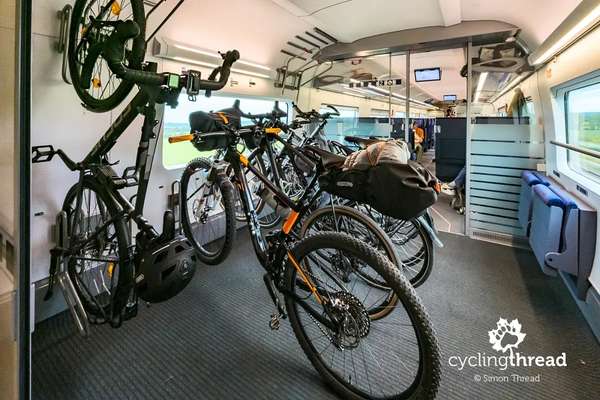
This was our third cycling trip through Franconia, and each time we discovered a slightly different side of this region. The Main River Cycling Route is one of the most beautiful in Germany, passing through popular cities like Bamberg and Würzburg, which a few years ago opened our eyes to cycling tourism in Germany. Our second trip, along the Hohenzollern Route, introduced us to a very local, quiet, and provincial Franconia, one that is almost untouched by tourists. Now, the Tauber-Altmühl Cycling Route felt... somewhere in between. On one hand, it featured Germany's most beautiful and popular city; on the other, it offered an intimate atmosphere in a picturesque, Jurassic landscape. Of these three trips, all were worth the effort and the visit, but today, the Tauber-Altmühl Radweg takes the top spot on our Franconian podium.
Find more German cycle routes on our website.
And check out my other articles on cycle.travel:
- Elberadweg - Dresden to Magdeburg
- Ciclovia Alpe-Adria - Austria & Italy
- Loire by bike in France
- Rhine Cycle Route in Switzerland
During our cycling the Loire Valley in France, we were looking forward to miles of smooth asphalt bike paths, but instead, we ended up navigating gravel paths alongside the Loire River. We had imagined enchanting vistas, yet we discovered more classic riverside views, unexpectedly enhanced by the presence of stunning castles and palaces. It was the sheer quantity, beauty, and variety of these historic structures that overshadowed our initial perceptions of the area. After all, the essence of the Loire Valley lies in France's rich history, its remarkable culture, art, and architecture, lending the region a touristic allure that places the Loire among the most captivating rivers to explore in Europe.
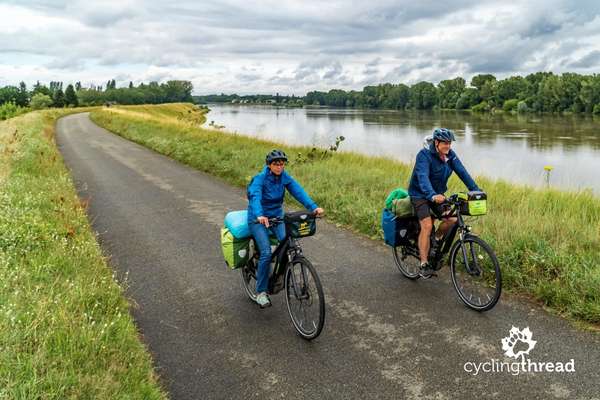
During our visit to France, we embarked on a bike journey through a portion of the Loire's central path, recognized as a UNESCO World Heritage Site in 2000. This esteemed and valuable stretch of the Loire Valley runs from Sully-sur-Loire near Orleans to Chalonnes-sur-Loire near Angers. To navigate this roughly 280-kilometer segment of the river, we traversed about 380 kilometers on the Loire à vélo, or "Loire by bike", trail. Starting from Sully-sur-Loire, our route took us through Orleans, Chambord, Blois, Amboise, Tours, Chinon, Saumur, and finally to Angers. On our journey back, we were aided by a special train for cyclists, a detail I'll delve into more at the article's conclusion.
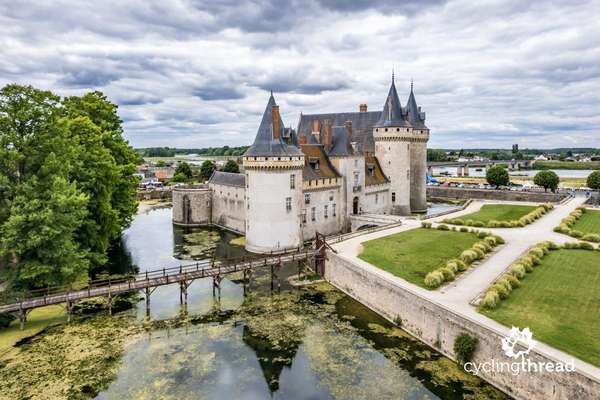
We selected the charming town of Sully-sur-Loire as the ideal launching point for our cycling adventure in the Loire Valley. The town's crown jewel is the modest yet stunning Château de Sully, a prime example of military-residential architecture from the 13th century. This moated castle captivates visitors with its historical depth and aesthetic appeal. Additionally, the town is home to a historic bridge spanning the Loire River, which links the town's two halves and enhances the scenic beauty of the area. Exploring the quaint streets lined with stone buildings and narrow alleys near the castle was an enchanting experience. Our evening walk through the historic heart of Sully-sur-Loire served as a delightful and symbolic beginning to our multi-day journey into the heart of the ancient Loire Valley.

In the heart of Orleans, we were welcomed by the sight of large Ukrainian flags in yellow and blue, waving along Joan of Arc Avenue. It was here that I captured one of my favorite photographs of the journey, just as the sun broke through the clouds after a rainfall, illuminating the grand Sainte-Croix Cathedral of Orleans that marks the eastern end of the city's most renowned street. Standing at 88 meters tall, the cathedral's spires rank it among the top five tallest in France. The cathedral is tied to the tale of a victorious mass in 1429, attended by Joan of Arc following the lifting of the English siege on Orleans. However, the fact that the current structure's erection began in 1601 hints that the famous story actually relates to an earlier Romanesque church that once stood in its stead. The Sainte-Croix Cathedral we see today was only inaugurated in 1829, exactly four centuries after the Siege of Orleans. A notable point is that since World War II, neither of the cathedral's two towers has undergone renovation, rendering them off-limits to the public.
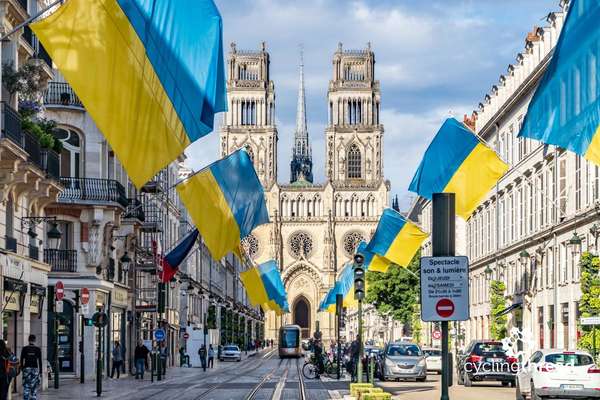
Upon our arrival that day, we settled into the welcoming Chaptal Hotel in Amboise for the night, which swiftly became recognized as one of the most bicycle-friendly accommodations we've encountered on our cycling tours across Europe. This distinction was largely due to its superbly organized bike room—a facility that not only offered secure bicycle storage but also included a workshop for bikes, a charging station for electric bikes, and even a dressing area alongside a rack for drying wet clothing. Furthermore, the bike room could be directly accessed from the street via its own entrance and a purpose-built ramp, enhancing convenience for cyclists. Emblematic of its dedication to cyclists, the hotel is a member of the Accueil Vélo network, a commitment prominently displayed by a plaque situated just below the state-issued hotel star rating sign.
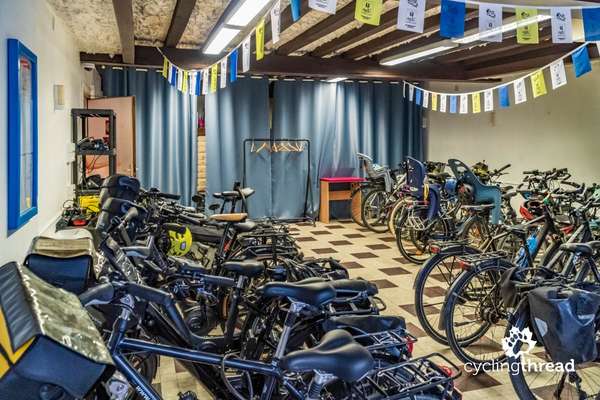
Even if just for the breathtaking views it offers of the city and river, Amboise Castle is a must-see destination. The opportunity to stroll through its meticulously kept, quaint garden adds to its allure. Our recollections of Amboise are further enriched by the quaint market we stumbled upon within the castle's courtyard. This market showcased local purveyors of jams, liqueurs, wines, and confections. Additionally, we had the unique experience of being interviewed by a French television crew, who were there capturing a segment on the revival of tourism following the hiatus caused by the pandemic. Not to forget, our leisurely evening walk the day before, meandering through the town's narrow lanes and along the riverfront promenade as the sun dipped below the horizon, was truly memorable. In essence, Amboise possesses all the qualities to be fondly remembered as one of the most notable towns and villages dotting the Loire Valley.
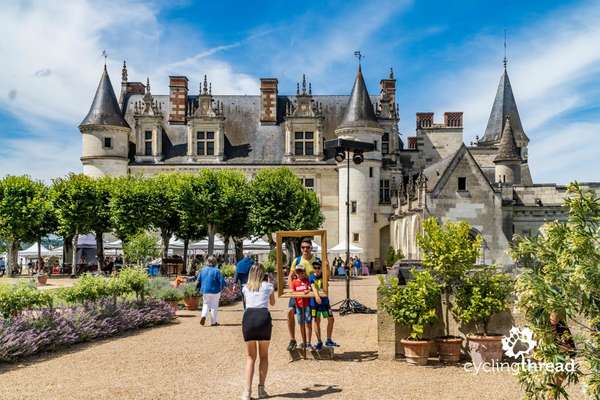
During a lovely dinner at the Au Local restaurant in Chinon, nestled right beside the castle tower, we were accompanied by one of the Loire's wines. The ambiance was perfect with the setting sun, the day's cycling efforts behind us, and the quiet chatter from neighboring tables on the terrace, occasionally punctuated by contented murmurs prompted by the exquisite flavors. The official route's website highlights local Loire delicacies, including the traditional Nantes almond cake flavored with rum, fouée (a type of pork ball served with a pâté-like filling), Tours' nougat cake, goat cheeses from the Loire Valley, the inverted apple tart known as tarte tatin, and the renowned mustards of Orleans, among others. France truly is a haven for food lovers, a fact that deserves a spot in any travel itinerary to the Loire Valley, where one might consider trading in some cycling miles for culinary delights.

The culmination of our journey's cyclist-friendly experiences occurred as we prepared to return to our car in Orleans by train. A young woman, adorned in the SNCF (French National Railway Company) uniform, emerged from a train we had randomly approached. She kindly asked us to detach our bicycles and panniers, then personally guided our bikes to the dedicated compartment on the lower level of a regional double-decker train. After inquiring about our final stop, she skillfully arranged our bicycles in the special racks, ensuring they were in the correct sequence for our destination. We then proceeded to the upper deck, which was reserved for cyclists, to take our seats. Upon reaching Orleans, we collected our bicycles. It was only when disembarking that I noticed the La Loire à Vélo inscription on the train, prompting me to seek out further details about this thoughtful service later.
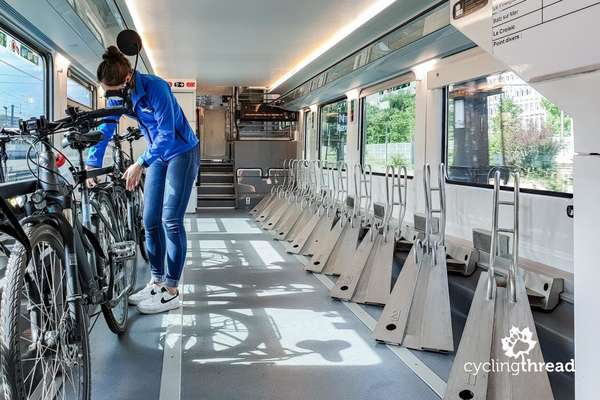
Our adventure in the Loire Valley was anything but disappointing. While the landscapes of the Loire might have seemed ordinary at first glance, they were completely outshined by the magnificent interiors of the palaces and castles we explored, as well as the exquisite culinary creations served by the region's restaurateurs. Rather than focusing solely on the quality of the cycling paths, I found myself continually impressed by the comprehensive amenities offered along the Loire à vélo cycle route. This included access to the French network of cyclist-friendly accommodations, clear signage along the route, and the exceptional train service catering specifically to cyclists. Our week-long exploration of the Loire Valley unfolded as a collection of delightful, unexpected discoveries in both travel and cycle-touring, elevating it to one of the top positions on our list of Europe's best cycling routes.
Check out my other articles on cycle.travel:
- Elberadweg - Dresden to Magdeburg
- Ciclovia Alpe-Adria - Austria & Italy
- Rhine Cycle Route in Switzerland
- Tauber-Altmühl Radweg in Franconia
It took us just a week to complete our bicycle trip along the Rhine Route in Switzerland, which stands out as the most breathtaking cycling path we've encountered in Europe to date. The Swiss path's greatest strength lies in its variety. As we followed the Rhine through Switzerland, we were mesmerized by the changing landscapes and picturesque cities, including Chur, Schaffhausen, Stein am Rhein, and Basel, the country's third-largest city. Embarking on a cycling journey along the Rhine is, without a doubt, an excellent idea for a biking vacation in Europe.
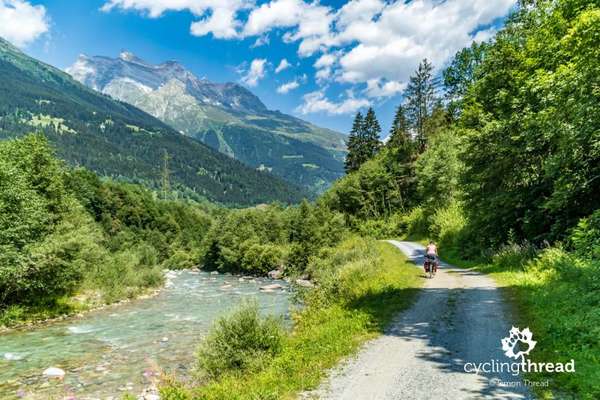
The Rhine Cycle Route in Switzerland marks the beginning of EuroVelo 15, an extensive European cycling trail that stretches for over 1200 kilometers to where the Rhine River flows into the North Sea. This journey starts at Andermatt, a charming resort nestled in the Swiss Alps, and continues towards the Oberalp Pass. From this point, close to the Rhine's source, the route follows the river's upper course, known as the Vorderrhein or Anterior Rhine, leading cyclists through the breathtaking Ruinaulta, often referred to as Switzerland's Grand Canyon. After leaving the city of Chur in the Graubünden region, the pathway enters a tranquil phase, winding through a wide valley until it reaches Lake Constance. The journey resumes along the bustling towns of Lake Constance's southern shore, through the scenic town of Stein am Rhein, and past Europe's largest waterfall, culminating in Basel. Despite the official distance being 430 kilometers, we found ourselves covering just shy of 480 kilometers.
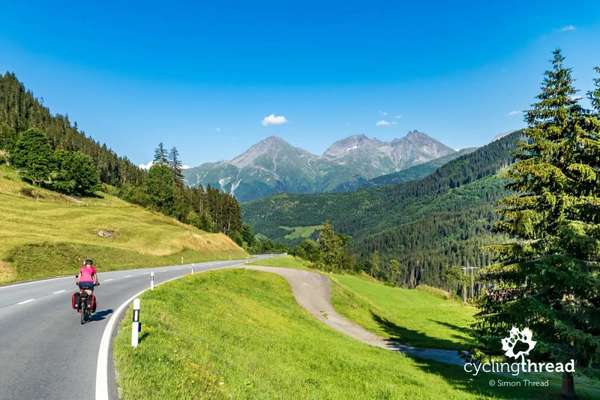
Andermatt greeted us with almost entirely clear, blue skies, while the surrounding Ursern Valley was drenched in sunshine. Historically, Andermatt served as a crucial junction for trade routes across the Alps, and today, it acts as a hub for a variety of tourist activities, including hiking, biking, driving, and even rail travel. The town retains a historical charm, with its main street, now restricted from tourist and through traffic, lined with ancient buildings. Noteworthy among these is the so-called Suworow House, which was once the residence of Russian General Alexander Suvorov during his campaign against France in the Second Coalition war of 1799. This historic building is currently home to the Ursern Valley Museum. A short distance away, one can find the quaint Drei Könige & Post hotel, which has been accommodating merchants crossing the Alps for centuries.
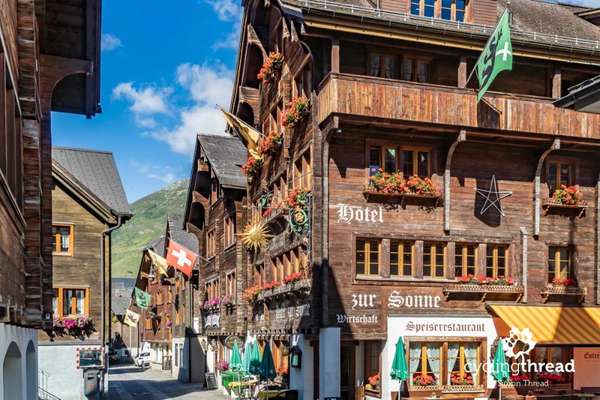
Navigating through a storm and taking time to marvel at the Grand Canyon, we reached Chur late in the evening, sadly missing out on experiencing the nightlife of Switzerland's oldest city. The following morning, we ventured to the serene square behind St. Martin's Church, located in front of the Rhaetian Museum. The museum offers traditional exhibits that tell the history of the Graubünden region, alongside intriguingly set-up displays in the basement of the ancient building, showcasing local archaeological treasures. Standing in the square outside the museum, one gets a sense of timeless tranquility. In one corner, a fountain quietly babbles, providing relief to tourists on warm days, who then continue on to the majestic Cathedral of the Assumption of the Blessed Virgin Mary, dominating the Old Town's skyline.
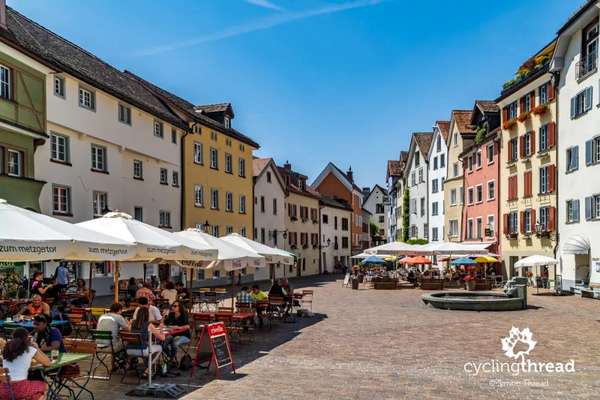
Shortly after rejoining the Rhine, we encountered one of the most breathtaking segments of our journey. Here, the cycling path hugs the river's edge, skirting the base of the Fläscherberg massif, crowned by the Regitzer Spitz peak. Fläscherberg is cherished by locals for outdoor activities and also doubles as a natural defense outpost for the Swiss army. This spot marks the northernmost boundary of the Graubünden canton, beyond which lies the diminutive principality of Liechtenstein. It presents perhaps the finest chance to capture a memorable photo with the Rhine as a backdrop.
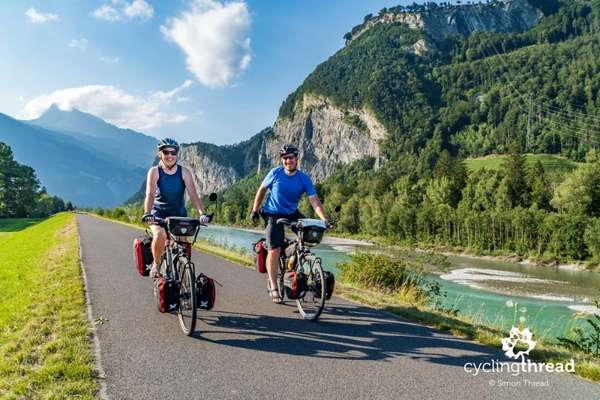
On the subsequent day, we arrived at a welcoming campsite in Buchs, a town we had previously passed through during our Alpine adventure. Much like our last visit, Buchs itself didn't leave a strong impression. Our journey had taken us through Chur, allowed us a lengthier stop in Bad Ragaz, a detour down to Sargans, and a quest to locate the Gonzen mine, leading us to the campsite just as the day was fading. The decision to explore the neighboring town of Werdenberg was thus deferred to the next day. With its castle bathed in the glow of spotlights, Werdenberg promised an ample share of picturesque views for our exploration.
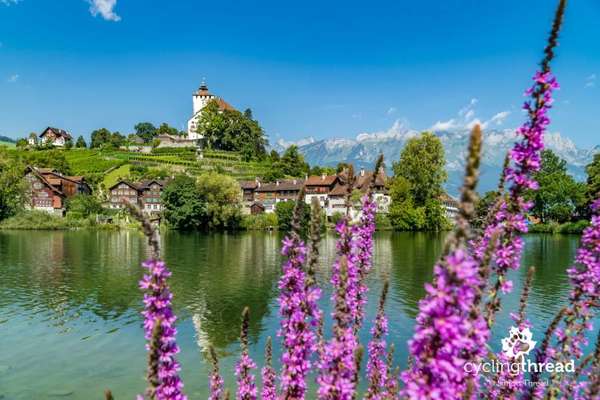
Upon departing Lake Constance, the Rhine progresses towards the North Sea, embracing the quintessential characteristics of a riverside landscape. It is within this setting that Stein am Rhein emerges as arguably the most enchanting town along the route. This town is home to numerous historical edifices recognized as part of Switzerland's national heritage, with a significant concentration around the uneven, inclined market square, dominated by the imposing structure of the town hall at its summit. The unique ambiance that must pervade this picturesque location during the height of the tourist season is something we could only envision.
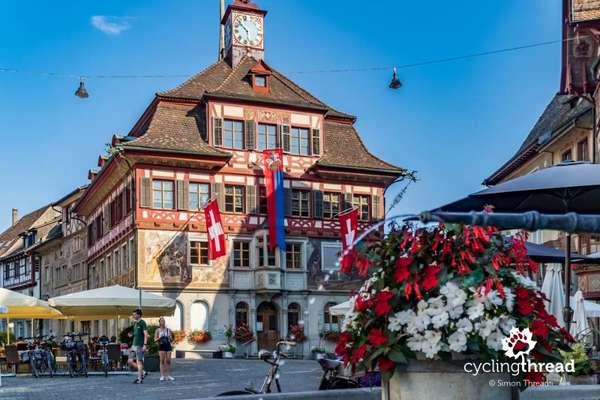
Schweiz Mobil stands out as an excellent resource for exploring Swiss bike paths, offering a comprehensive website and mobile application that details tourist trails across Switzerland. This includes options for both touring and mountain biking, as well as hiking, rollerblading, and kayaking. In planning our journey, I found great pleasure in navigating through the assortment of cycling paths on the map of Switzerland's bike trails. We have plans to tackle the Lakes Route and the Jura Route in future years. It's worth noting that the site's sidebar menu allows users to filter the map display by types of routes - national routes are denoted by a single digit, regional by two digits, and local by three. Additionally, the site provides recommendations for daily stage lengths and brief overviews of the attractions one can expect to encounter.
Discover more Swiss cycle routes on our website.
And check out my other articles on cycle.travel:
- Elberadweg - Dresden to Magdeburg
- Ciclovia Alpe-Adria - Austria & Italy
- Loire by bike in France
- Tauber-Altmühl Radweg in Franconia
The Alpe-Adria bike route is one of Europe's most beautiful and popular cycling paths. In Austria, it's known as the Alpe-Adria Radweg, and in Italy, it's called the Ciclovia Alpe-Adria. The route is famous for crossing the Alps, going from Austria's northern Alps to the Adriatic Sea in Italy. What makes the Alpe-Adria stand out among European bike trails is a special 60-kilometer section that was once a railway in the Alps but is now a bike path. This part has many kilometers of paths that follow the old railway, including tunnels now used only by bikes, as well as beautiful old bridges and train stations that have been brought back to life thanks to bike riders.

The Alpe-Adria bike route's appeal comes from its safe and comfortable riding conditions, with many parts far from car traffic. One section, considered among Europe's best bike paths, follows an old railway from Tarvisio to Udine. The route's varied landscapes add to its charm, starting from the East Alpine scenery, moving through picturesque Carinthia, and ending in the warm Mediterranean climate of the Adriatic. The journey's difficulty changes daily - it begins with two days of easy climbing, followed by a smooth descent into the Villach basin, then another climb, and ends with two days on a gently sloping path to the finish. Along the way, riders can enjoy diverse sights, taste the distinct cuisines of Austria and Italy, and benefit from a bike-friendly tourism setup, including places to stay. All these factors make it an ideal setting for a cycling vacation.

The beginning of the Alpe-Adria bike route is easier to ride than expected, thanks to its path along the Salzach and Gasteiner Ache valleys, which gently slope up towards the High Tauern mountains. In the first two days, cyclists cover around 120 kilometers with just two main climbs - one shortly after passing Schwarzach im Pongau and the other approaching and within Bad Gastein. The first climb has steep parts between 10-15%, and near the Church of Saints Primus and Felician in Bad Gastein, the slope exceeds 16%. However, these climbs are relatively short, about 2-3 kilometers, meaning that cyclists who aren't as experienced can easily walk these sections without losing much time.

We got off the train that passed through a tunnel under the High Tauern mountains and found ourselves in Carinthia for the third year in a row. This beautiful part of Austria is a hub for cycling tourism, attracting riders from all over Europe. Our first trip here was the Great Carinthia Lake Loop, a journey connecting the biggest lakes in Carinthia, starting from Villach. The following year, we took on the Drava bicycle route, celebrated as one of Europe's top cycling paths, with its central and longest stretch cutting through Carinthia. This year, on the Alpe-Adria route, we explored new areas of bike-friendly Carinthia. We started with a ride along the Möll River valley, which flows from the well-known Grossglockner mountain group, and then covered several kilometers in the southern part of Carinthia, facing the initial ascents towards the Julian Alps.
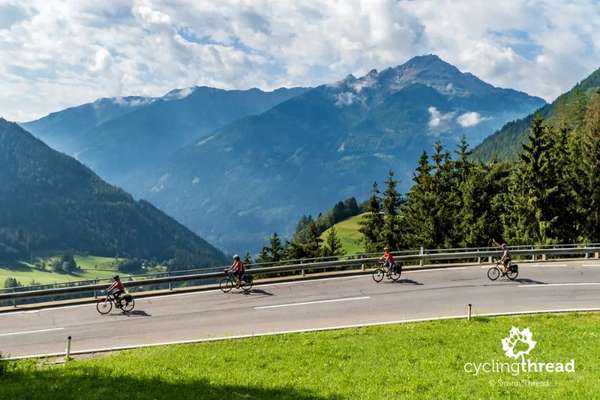
Before reaching Tarvisio, we joined a bike path that follows the route of the old Pontebbana Railway, named after the town of Pontebba, near the former Austro-Italian border. The railway was last used at the end of the 20th century, and between 1985 and 2000, a new, modern, double-track railway was constructed with parallel tunnels through the Alps. After the old railway was abandoned, the tracks were transformed into a bike path by removing the old ties and laying down smooth asphalt. This has attracted cyclists who appreciate the mild incline of no more than 2.2%, offering an easy ride away from road traffic, amidst stunning river and Alpine landscapes. This scenic path stretches for about 60 kilometers between Tarvisio and Gemona del Friuli.

As you leave the charming town of Gemona del Friuli on the Alpe-Adria route, the Alpine scenery comes to an abrupt end, as if sliced away. The landscape flattens, offering a peaceful ambiance. After a few kilometers of gentle slopes, you'll find you need to put in more effort as you head towards the Adriatic Sea. The route passes through fields, meadows, and protected green areas. Noteworthy sights before reaching Udine include the stunning church in Vendoglio, within the larger area of Treppo Grande; the delightful town of Cassacco with its 13th-century palace, which is private and closed to the public; and the increasingly warm breezes that hint at the nearby Adriatic. The paths vary along this section, ranging from asphalt bike paths and local gravel roads to almost field paths and brief stretches on quiet public roads.

The Alpe-Adria bike route exemplifies the best of cycling tourism by transforming old, unused infrastructure into a vibrant cycling path, alongside providing a network of bike-friendly accommodations, eateries, and even special transport services for cyclists. Set against the backdrop of Europe's stunning landscapes, this route not only offers breathtaking views but also introduces riders to a rich mix of cultural, historical, and natural sights. These elements come together perfectly, creating picturesque cycling scenes like those at the old station in Chiusaforte. While it might be a stretch, the Alpe-Adria can be compared to the Velo Dunajec in Poland, which also leads the way in its region. Velo Dunajec too traverses diverse landscapes, follows river paths, boasts cycling bridges, and is developing its network of Bike-Friendly Places. Hopefully, it will be completed in its entirety and achieve the same level of popularity and emotional appeal as the Alpe-Adria.
Check out our entire report from the Alpe Adria bicycle route in Austria and Italy.
And check out my other articles on cycle.travel:
- Elberadweg - Dresden to Magdeburg
- Rhine Cycle Route in Switzerland
- Loire by bike in France
- Tauber-Altmühl Radweg in Franconia
Log in with your cycle.travel account:
| Password |
Or simply use your account on: